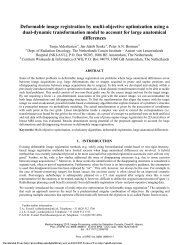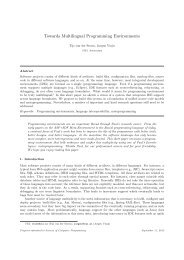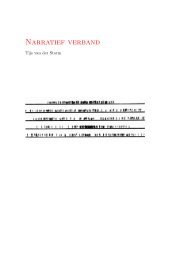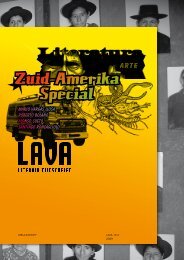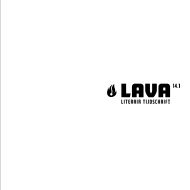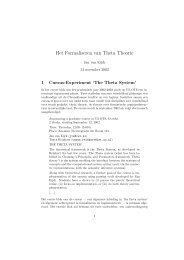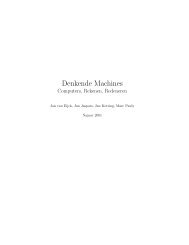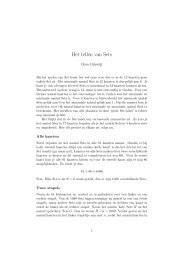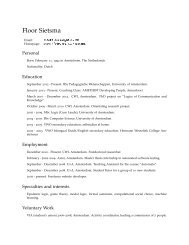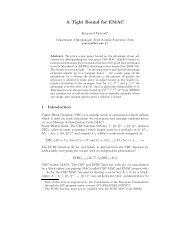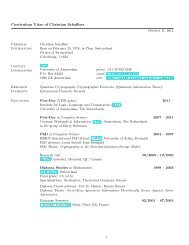Object-Oriented Databases Need for Complex Data Types - CWI
Object-Oriented Databases Need for Complex Data Types - CWI
Object-Oriented Databases Need for Complex Data Types - CWI
You also want an ePaper? Increase the reach of your titles
YUMPU automatically turns print PDFs into web optimized ePapers that Google loves.
<strong>Data</strong>base System Concepts<br />
Messages and Methods<br />
Methods are programs written in general-purpose language<br />
with the following features<br />
only variables in the object itself may be referenced directly<br />
data in other objects are referenced only by sending messages.<br />
Methods can be read-only or update methods<br />
Read-only methods do not change the value of the object<br />
Strictly speaking, every attribute of an entity must be<br />
represented by a variable and two methods, one to read and<br />
the other to update the attribute<br />
e.g., the attribute address is represented by a variable address<br />
and two messages get-address and set-address.<br />
<strong>Data</strong>base System Concepts<br />
For convenience, many object-oriented data models permit direct<br />
access to variables of other objects.<br />
8.5<br />
<strong>Object</strong> Classes<br />
8.6<br />
©Silberschatz, Korth and Sudarshan<br />
Similar objects are grouped into a class; each such object is<br />
called an instance of its class<br />
All objects in a class have the same<br />
Variables, with the same types<br />
message interface<br />
methods<br />
The may differ in the values assigned to variables<br />
Example: Group objects <strong>for</strong> people into a person class<br />
Classes are analogous to entity sets in the E-R model<br />
©Silberschatz, Korth and Sudarshan<br />
3



